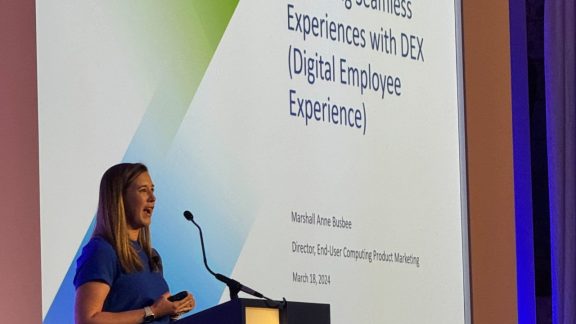By Fred Schimscheimer, Sr.Technical Marketing Manager, Desktop Products
I recently had the opportunity to do some extensive testing between VMware ThinApp and Microsoft App-V. As part of the End-User Computing technical marketing team, I have the opportunity to dig deep into our products and those of our competitors.
One feature that stands out from my recent round of tests is the portability of applications via ThinApp vs. App-V. You see, Microsoft App-V requires a streaming server to run the App-V applications on a desktop. Applications packaged via ThinApp don’t require any additional servers or resources to run. An application packaged with ThinApp is a totally encapsulated application that can run anywhere. You can run separate ThinApp versions of Internet Explorer 6, IE7 and IE8 all on the same desktop at the same time. We’ve conducted live demonstrations of this at numerous events including VMworld 2010 in San Francisco last year.
One benefit to running ThinApp that employees don’t see, but the IT department does is that an application packaged with ThinApp uses the least amount of disk I/O. During my recent testing, I was seeing a better than a 50 percent decrease in disk I/O vs. Microsoft App-V.
We have also seen third-party reports that point to these advantages. Recently, Project VRC released their findings in a new whitepaper “Application Virtualization Impact on VDI” which is summarized in a blog posting on Brian Madden’s website.
Why is this important?
Well, you can load more ThinApp applications on a given server which will give you better consolidation ratios resulting in a cost savings to your company. You can learn more about ThinApp and how it can help you in your use case by checking out the upcoming VMware View Bootcamp. The View Bootcamp is a free, nine-part training, where you can learn more about how to successfully roll out and deploy your virtual desktops and applications. Part five of the Bootcamp series looks at application virtualization. Check it out here!






